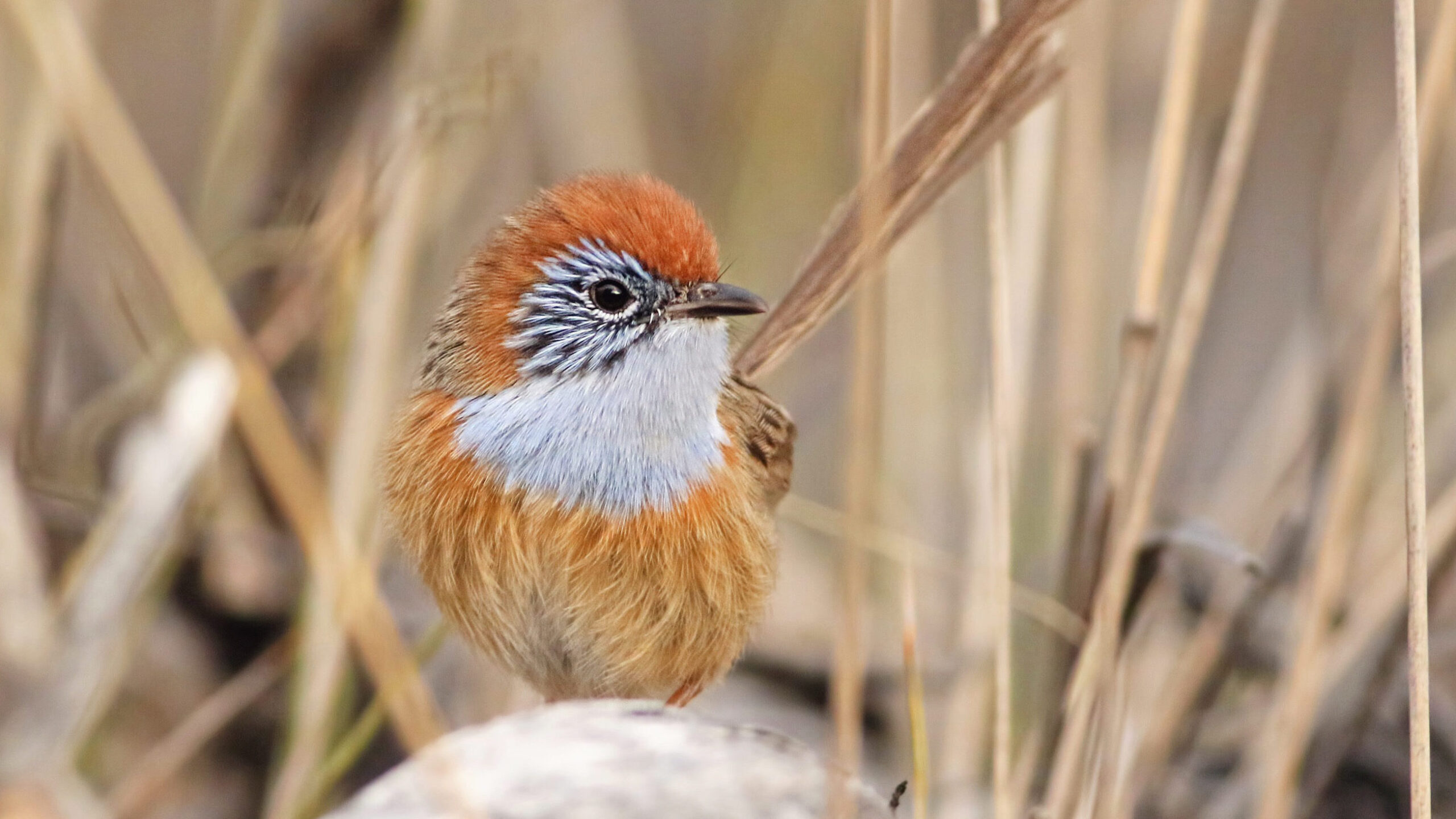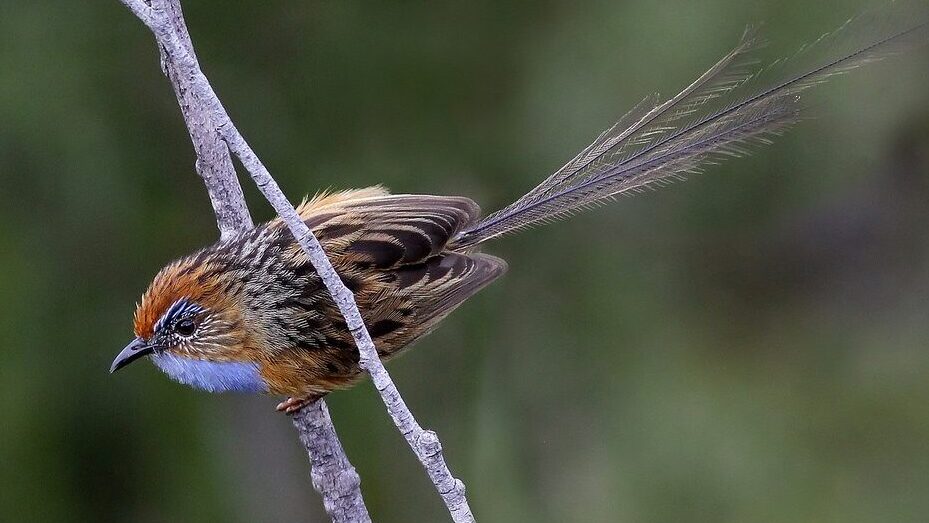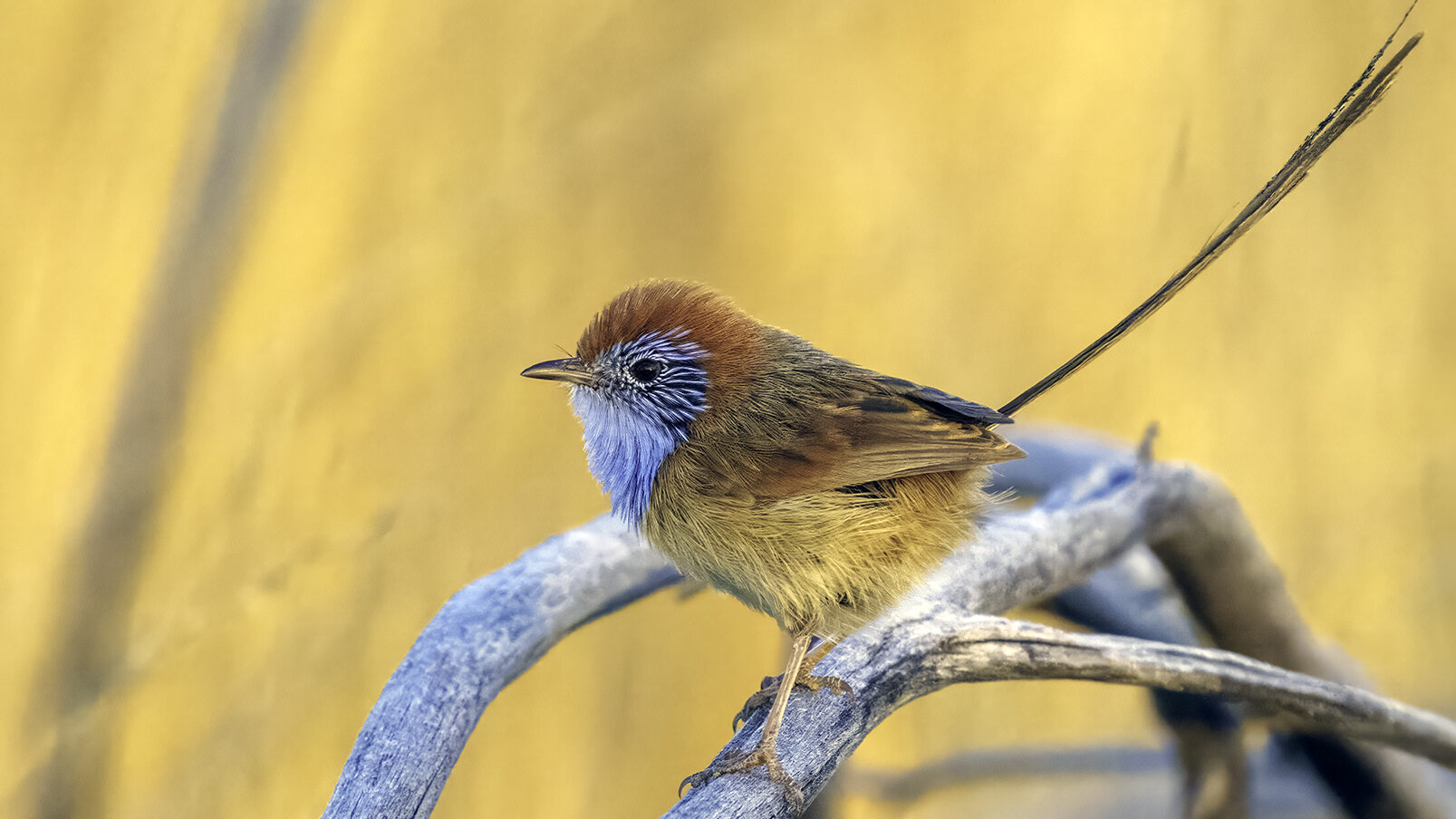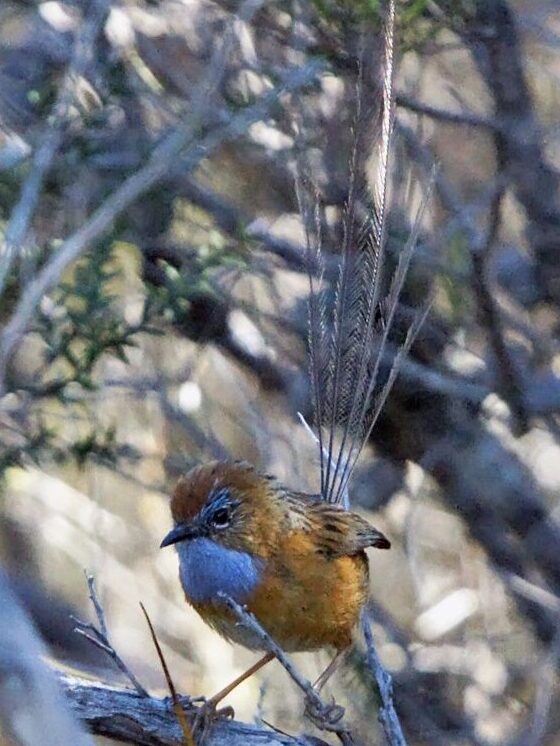Emu-wrens: The birds that weigh the same as a teaspoon of sugar

Bec Crew
Bec Crew

It’s almost impossible to imagine, but the mallee emu-wren (Stipiturus mallee) – a sweet little songbird that’s found in a tiny pocket of land in Victoria – weighs just 4 grams.
It’s so small, its eggs are the size of a pea, and as a fully grown adult, it can pass through the standard aviary mesh that scientists use to catch birds in the wild for tagging and surveying.
It’s a neat little trick, but doesn’t exactly help the mallee emu-wren’s cause – these tiny birds are endangered, with populations decreasing, and they’re trying to survive in fragmented populations spread across the Murray-Sunset region of north-western Victoria.
They’re so rare these days, bird enthusiasts consider them the ‘Holy Grail’.
Mini emu birds
There are three species of emu-wrens, and they’re all endemic to Australia.
There’s the mallee emu-wren (Stipiturus mallee), which stretches 16.5 centimetres from head to the tip of its remarkable tail, which comprises two-thirds of its total length.

There’s the southern emu-wren (Stipiturus malachurus), which grows up to 19 cm long and about 7 grams, and found all along the east coast of Australia, from south-eastern Queensland through to Tasmania, and west to south-eastern South Australia. It’s also found in the south-western corner of Western Australia.

And finally, there’s the rufous-crowned emu-wren (Stipiturus ruficeps), which is considered the most brightly coloured of the emu-wrens, and stretching just 15 cm long, is the smallest and shortest of the three species. But weighing in at 6 grams, it’s considerably heftier than the mallee emu-wren.
The rufous-crowned emu-wren is found in the spinifex grasslands of central Australia, and in a number of sites around Alice Springs.

The emu-wrens got their name from their wonderful tail, which is made up of six filamentous feathers that look exactly like emu feathers, especially when they’re held up like this:

It’s a pretty cool thing when you can find such a distinctive link between one of Australia’s tiniest birds, and the emu – one of its largest.

